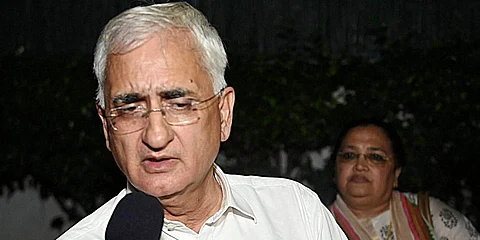

The road to democracy is paved with idealistic intentions. The road to governance is paved with the dreams of a nation. Ours is perhaps the only country, which comprises two nations - Article 1 of the Constitution reads, "India, that is Bharat, shall be a Union of States".
In the Hindutva era, Bharat has been empowered at last, albeit not with money or jobs. Bharatiya is now a political and cultural identity whose contours are shaped by aggressive faith and travesties of dead Mughals.
It has no time for India that has evolved through decades of Western education and exposure to contemporary consumer trends. Bharatiya is a new freedom movement, ironically redefined by an ambitious Twitter actress and implemented by a self-virtuous mob. Both are states of mind, ideas that transcend national borders.
The difference between Bharat and India is the starkest now. In India the markets are booming - the Sensex keeps breaking its own highs.
A Lok Foundation survey found that English is mostly an urban phenomenon; only 3 percent of rural respondents could speak English, while 12 percent of urban respondents did. Moreover, 41 percent of rich Indians spoke English vis-a-vis less than 2 percent of the poor.
The city is the main driver of the economy. Prominent industries are urban-driven and managed by Western-educated business administrators. Access to the best of global cuisine, fashion, travel, entertainment and art is based in India, not Bharat though the latter's heirloom motifs are reimagined for profit.
In Bharat, a chief minister proposes using cow dung to revive the economy while in India, his colleague has a Nobel laureate and reformist economists advising the government. Bharat is a contrary story of poverty, violence, police collusion, misogyny and murder.
A few cops are merely suspended after a young man died in police custody - under judicial pressure, cases are registered against "persons unknown". News reports reveal numerous minor girls and Dalit women being gangraped in Uttar Pradesh, mutilated and set on fire.
Based on flimsy accusations of instigating communal violence in riot-pocked areas, Tripura arrests journalists for doing their job. Books that enrage the Bharatiya gestalt are met with pyromaniac rage. Despite commanding the majority and ruling ideology, Hindutva thrives on past victimhood.
However, Salman Khurshid's comparison of Hindutva with ISIS and Boko Haram is absurd and malicious. The horrifying visuals of a man jumping on a dead body, or a young man being lynched are indeed aberrations. But when aberrations happen too often a trend is born.
Paradoxically, the fundamentals of the evolution of India and Bharat were based on development parameters, from the Socialist Era to the capital- and market-driven Reform Era. India benefitted from Manmohan Singh’s attempts to end Licence Raj and open up the economy.
Bharat, which implies the rural and semi-rural classes, is the stepchild of democracy. Very little changed in Bharat, which plodded on, carrying the burden of hopelessness and misgovernance. It is this Bharat that Narendra Modi wanted to change and raise from its morass.
However, the boundary lines have blurred. Without India, Bharat cannot progress. Without India’s cosmopolitan power, Bharat will sink into darkness. And without Bharat, India’s cultural roots will vanish, leaving it untethered in global waters.
Without its wisdom, India's identity will be one-dimensional. It is time to bring them together as a modern democracy based on economic growth and liberation from ignorance, poverty and violence. Now that will be a freedom movement worth having.
(The writer can be contacted at ravi@newindianexpress.com)